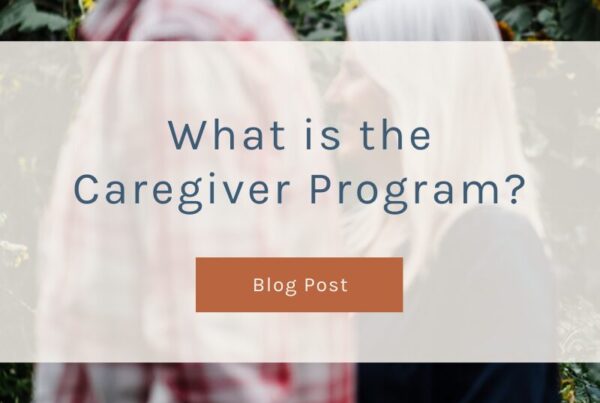
What is OSFED?
OSFED stands for “Other Specified Feeding or Eating Disorder” and it is the most common eating disorder diagnosis that we see at EDCMT.
OSFED is a feeding or eating disorder that causes significant distress or impairment, but does not meet the criteria for Anorexia Nervosa-R, Anorexia Nervosa-B/P, Bulimia Nervosa, or Binge Eating Disorder. It includes conditions such as Atypical Anorexia, Subclinical Bulimia Nervosa, Subclinical Binge Eating Disorder, Purging Disorder, and Night Eating Syndrome. An OSFED diagnosis may include an explanation of the symptoms and why they do not meet the criteria for a specific eating disorder.
- Atypical Anorexia is defined as when all the criteria for anorexia are met, except the patient’s weight is at or above a normal weight range.
- Subclinical Bulimia Nervosa is defined as when all the criteria for Bulimia Nervosa are met, except at a lower frequency or for a shorter period of time.
- Subclinical Binge Eating Disorder is when all the criteria for binge eating disorder are met, except at a lower frequency or for a shorter period of time.
- Purging Disorder is when purging behaviors are used repeatedly to influence body weight or shape, without binge eating.
- Night Eating Syndrome is recurring episodes of eating late at night, such as awaking in the middle of the night to eat, excessive eating after the night time meal, when these behaviors are not better explained by social norms or environmental influences (such as working long or late hours, or social interactions that take place late at night).
These kinds of disorders are psychologically and physically destructive, and need to be addressed, even if they don’t meet all the criteria for other more well known disorders. For example, those in large bodies are 2-4 times more likely to have an eating disorder, even though their eating disorder symptoms are often overlooked, and other diseases that are associated with those in larger bodies are over emphasized.
A common misconception about OSFED is that because it does not meet all the criteria for other ED’s, it is less severe. This is not true. OFSED is a very real and debilitating disorder deserving treatment. Additionally, since eating disorders can change over time, a person can be diagnosed with OSFED while on their way to a diagnosis of anorexia nervosa or bulimia nervosa.
Because of the wide breadth of behaviors that can be classified as OSFED, there are many warning signs that could indicate OSFED. Some common ones to look for include:
- Preoccupation with food and eating
- Preoccupation with body and weight
- Distorted body image
- Dissatisfaction with body
- Depression, Anxiety, or Irritability
- Increased anxiety or irritability around meals
- Refusing to eat certain categories of food such as carbs or sugar
- Low self esteem and feelings of shame, self loathing, or guilt
- Hiding body with baggy clothes
- Appears uncomfortable eating around others
- Stealing or hoarding food
- Disappears after eating, often to the bathroom
- Excessive or rigid exercise routine, despite weather, illness, injury, etc.
- Calluses on the back of hands and knuckles from self-induced vomiting
- Making frequent comments about “feeling fat” or overweight
- Withdrawal from friends, family, and social life
There is deep suffering that goes along with all of these warning signs and symptoms, though many people worry that they are not “sick enough” to deserve treatment. We understand the suffering and disruption of everyday life that this disorder causes, and we know that there is a life that is free of them.
It is important to remember that just because OSFED is a “catch all” for those that don’t meet the criteria for another diagnosis, doesn’t mean that it is any less serious of an eating disorder. At least one study has shown that the mortality rate for OSFED was as high as that for Anorexia Nervosa. And, recovery is possible. OSFED is the most common eating disorder that we see at the Eating Disorder Center of Montana, and many of our patients are able to find their way to recovery through treatment with our multidisciplinary team.
Sources:
https://www.nationaleatingdisorders.org/learn/by-eating-disorder/osfed
https://www.verywellmind.com/osfed-the-other-eating-disorder-1138307
Crow SJ, Peterson CB, Swanson SA, et al. Increased mortality in bulimia nervosa and other eating disorders. Am J Psychiatry. 2009;166(12):1342-6. doi:10.1176/appi.ajp.2009.09020247
Nagata JM, Garber AK, Tabler JL, Murray SB, Bibbins-Domingo K. Prevalence and Correlates of Disordered Eating Behaviors Among Young Adults with Overweight or Obesity. J Gen Intern Med. 2018 Aug;33(8):1337-1343. doi: 10.1007/s11606-018-4465-z. Epub 2018 Jun 11. PMID: 29948810; PMCID: PMC6082209.
Duncan L, Yilmaz Z, Gaspar H, Walters R, Goldstein J, Anttila V, Bulik-Sullivan B, Ripke S; Eating Disorders Working Group of the Psychiatric Genomics Consortium, Thornton L, Hinney A, Daly M, Sullivan PF, Zeggini E, Breen G, Bulik CM. Significant Locus and Metabolic Genetic Correlations Revealed in Genome-Wide Association Study of Anorexia Nervosa. Am J Psychiatry. 2017 Sep 1;174(9):850-858. doi: 10.1176/appi.ajp.2017.16121402. Epub 2017 May 12. PMID: 28494655; PMCID: PMC5581217.




